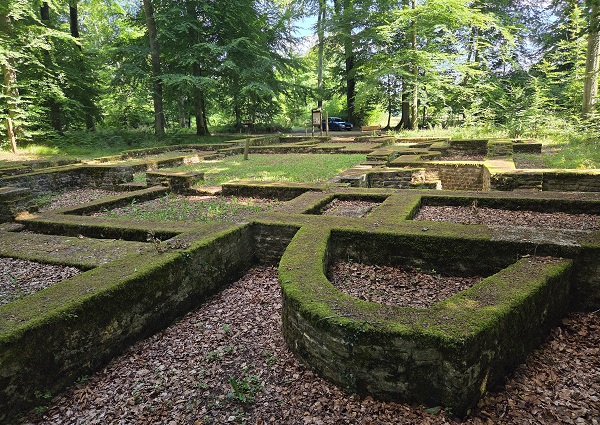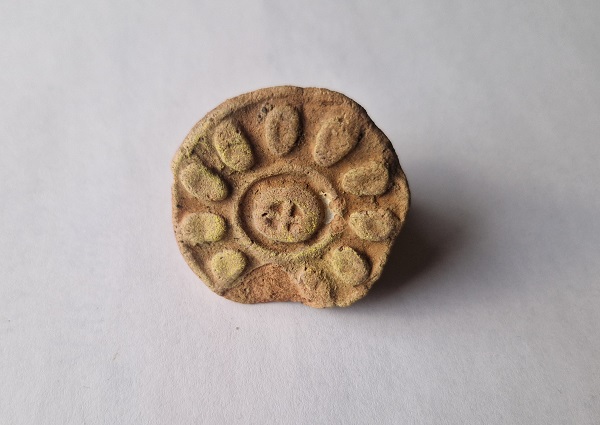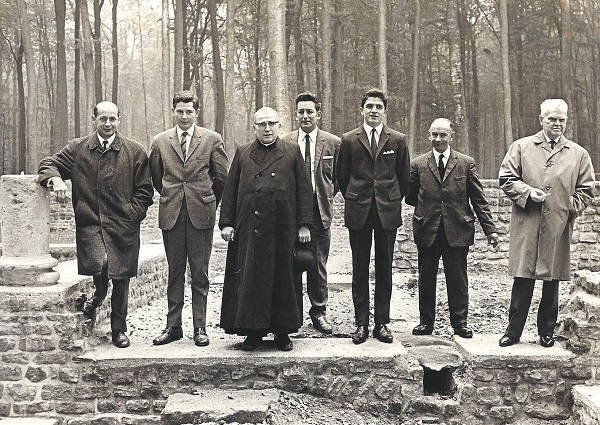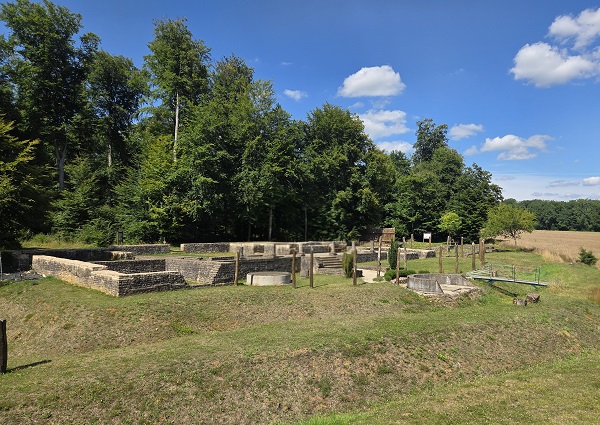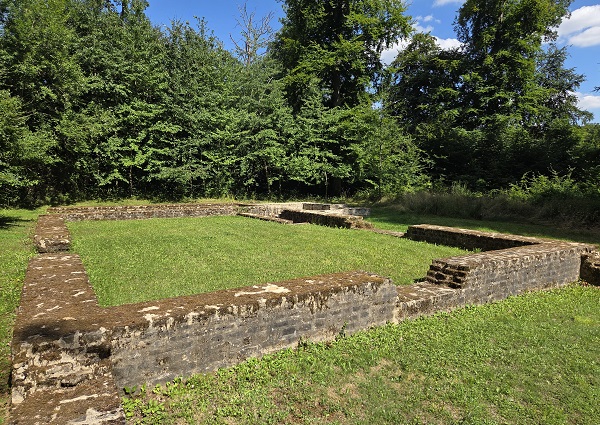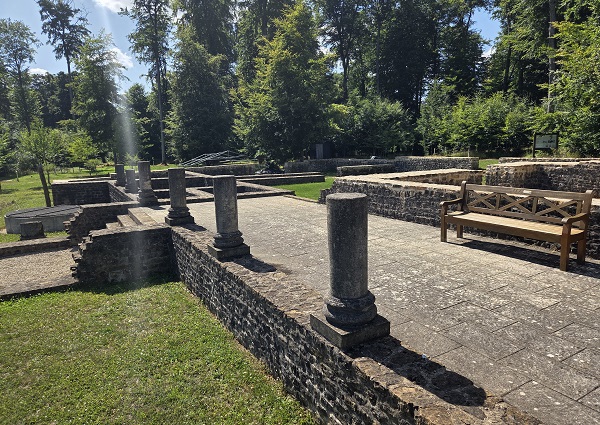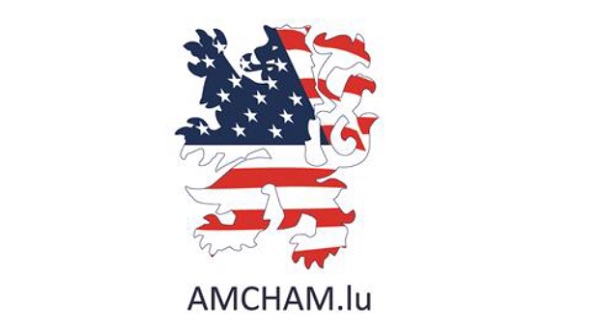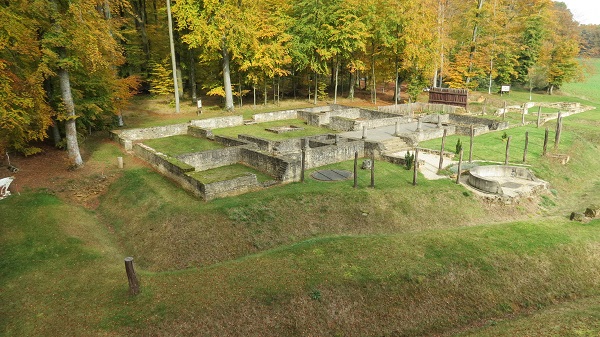 Aerial view of the main residential mansion;
Credit: GKA
Aerial view of the main residential mansion;
Credit: GKA
Chronicle.lu has teamed up with Luxembourg's National Institute for Archaeological Research (Institut national de recherches archéologiques - INRA) for a series of articles on archaeological digs and discoveries around the Grand Duchy.
The series explores digs spanning from prehistoric to Roman and medieval times, highlighting key finds and what they reveal about Luxembourg’s past. It also sheds light on the work of the INRA and its approach to archaeological and historical research.
The latest article in this series looks at the Roman Villa of Goeblange-Miecher and how it developed from a La Tène-era estate to a Gallo-Roman villa.
The extensive villa complex "Goeblingen-Miecher" was discovered by the parish priest of Nospelt, Georges Kayser. With permission from the "Musées de l'Etat" (now the Musée national d'archéologie, d'histoire et d'art - MNAHA), he fully excavated two buildings between 1964 and 1972.
Following his death in 1988, his former collaborators founded the association D'Georges Kayser Altertumsfuerscher (GKA) the following year to continue the excavations. Since then, the site has been researched on a voluntary basis under the supervision of the INRA and documented annually in the association's publication Den Ausgriewer.
Initially, buildings 1 to 5, scattered within a rampart-like enclosure, were interpreted as a typical dispersed villa rustica. However, this view changed in 2019, when geophysical surveys definitively proved that the site is significantly larger and more systematically organised than previously thought, identifying it as an axial villa.
Prehistory: A Site with a Long Tradition of Settlement
Finds such as stone axes, flint tools and debitage attest to human presence at the site as early as the prehistoric period. Particularly noteworthy is a polished axe blade made of eclogite - an imported piece from northern Italy - dated to between 4500 and 3500 BCE.
Clear evidence of settlement begins in the Urnfield period (1300-750 BCE), including a grave with five bronze grave goods and some postholes. Ceramic finds trace continued occupation through the Hallstatt period (750-450 BCE) into the La Tène period (450 BCE to around the birth of Christ). Postholes - including some complete building plans - as well as the enclosing rampart, storage and refuse pits indicate extensive usage of the site.
The size and features of the La Tène-period settlement suggest that it was a significant rural aristocratic estate. Over time, the original rampart was partially dismantled and the site was extended southward beyond the valley floor. The aristocratic burial mounds of Goeblingen-Nospelt, located 500 metres away, are likely associated with this estate.
Gallo-Roman Villa: A Farmstead of Regional Significance
During the Roman Imperial period, the site developed into one of the larger agricultural estates (nearly 8 hectares) in what is now Luxembourg. The first stone buildings, as well as a funerary monument, were built from the 1st century CE onwards. Around the same time, a new entranceway was laid out to provide better access to the main Roman Reims-Trier road. The surrounding fertile farmland formed the basis of the estate's economy.
At its height in the early 3rd century, the fully developed axial villa comprised at least thirteen buildings, including:
- a representative residential mansion;
- a bathhouse with underfloor heating and hot-water pools;
- a sanctuary;
- numerous agricultural and utility buildings, including a brewery and a smithy.
The layout is particularly striking: while eight buildings appear to have been symmetrically arranged along the main axis, others were scattered irregularly in the northern part of the site. The combination of axial and dispersed building patterns makes Goeblingen-Miecher a rare and previously little-known hybrid form of villa.
In the late 3rd century, likely in response to Germanic incursions, the main residence was converted into a fortified structure with a granary, three defensive ditches and a wooden palisade.
Around the turn of the 4th century, the estate experienced a brief revival, marked by the construction of a new residential building. However, with the onset of the Migration Period, the villa was gradually abandoned in the late 4th century and fell into decay.
Visiting the Site Today
The villa is fully accessible to visitors and lies directly along the CR189 between Goeblange and Simmerschmelz. From a visitor car park by the roadside, a marked footpath with informational panels leads uphill to the excavation site.


